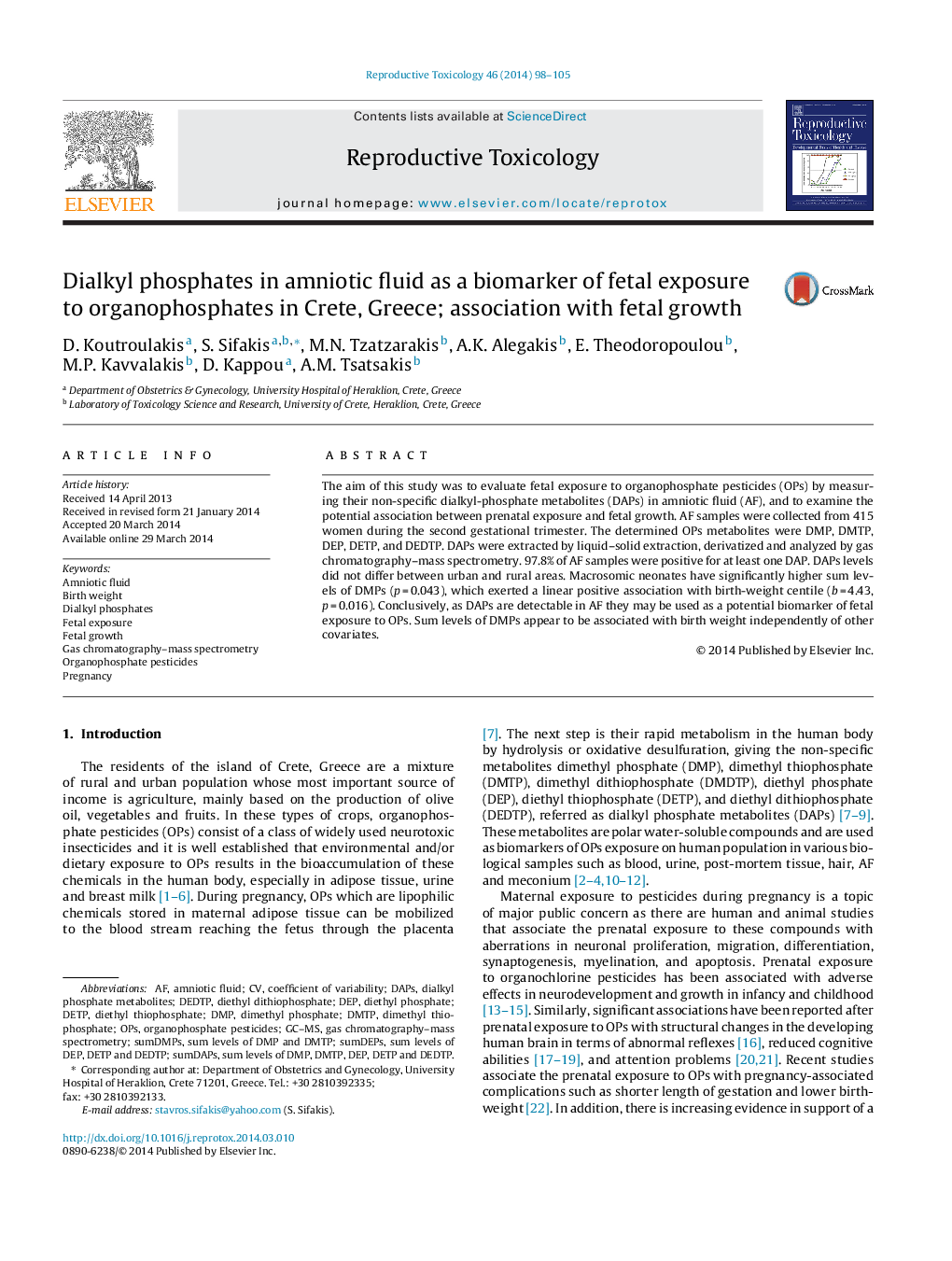| Article ID | Journal | Published Year | Pages | File Type |
|---|---|---|---|---|
| 5858897 | Reproductive Toxicology | 2014 | 8 Pages |
â¢Organophosphate pesticides metabolites are detectable in the amniotic fluid during second trimester in the vast majority of pregnancies.â¢Organophosphate pesticides metabolites may be a promising marker for fetal exposure to Organophosphate Pesticides.â¢Dimethyl phosphate metabolites in amniotic fluid are associated with fetal growth independently of other covariates.
The aim of this study was to evaluate fetal exposure to organophosphate pesticides (OPs) by measuring their non-specific dialkyl-phosphate metabolites (DAPs) in amniotic fluid (AF), and to examine the potential association between prenatal exposure and fetal growth. AF samples were collected from 415 women during the second gestational trimester. The determined OPs metabolites were DMP, DMTP, DEP, DETP, and DEDTP. DAPs were extracted by liquid-solid extraction, derivatized and analyzed by gas chromatography-mass spectrometry. 97.8% of AF samples were positive for at least one DAP. DAPs levels did not differ between urban and rural areas. Macrosomic neonates have significantly higher sum levels of DMPs (p = 0.043), which exerted a linear positive association with birth-weight centile (b = 4.43, p = 0.016). Conclusively, as DAPs are detectable in AF they may be used as a potential biomarker of fetal exposure to OPs. Sum levels of DMPs appear to be associated with birth weight independently of other covariates.
